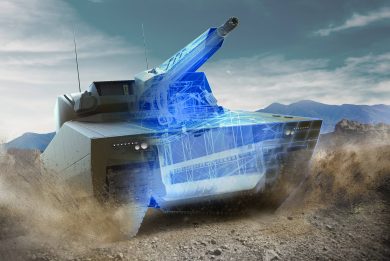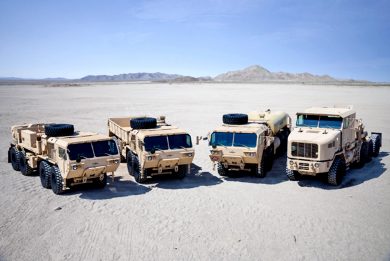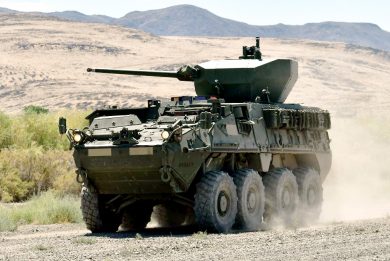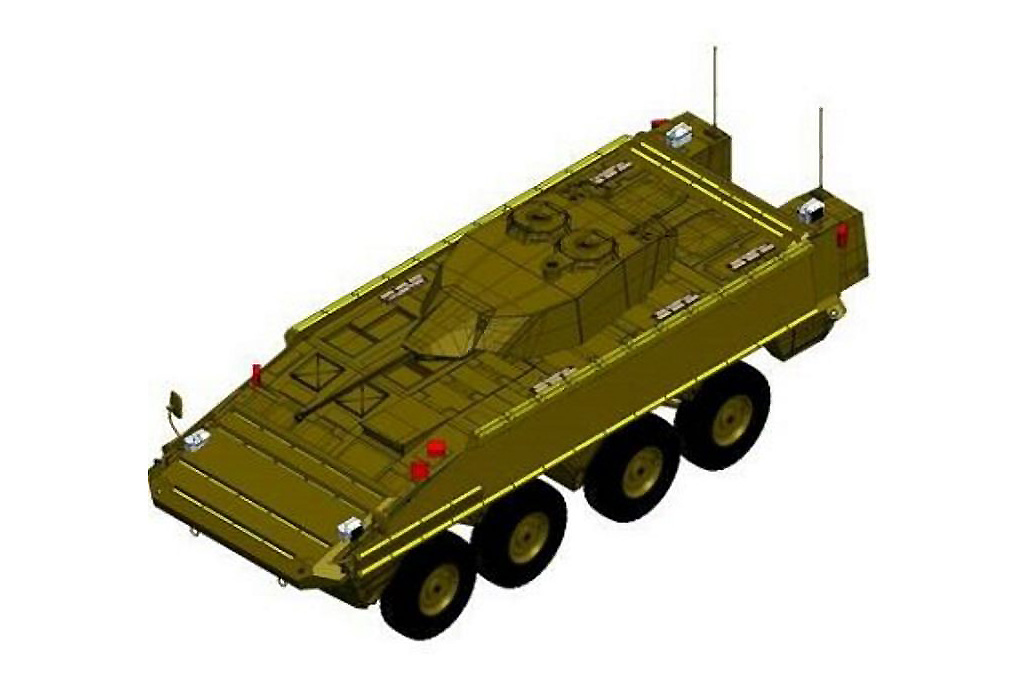
Artis reveals Sentinel active protection system to counter drones and FPVs
The US company Artis has released details of its new Sentinel active protection system (APS) that is able to counter drone-delivered munitions and first-person view (FPV) kamikaze drones in a 5th January news release issued by the company
The system builds on the company’s experience in developing Iron Curtain, an APS that was funded and trialled by DARPA in the early 2000s. “The DARPA challenge was to protect the vehicle while not shooting out to endanger people around the vehicle. This required a system that could sample at higher speeds and process massive amounts of data in real-time. Sentinel extends that to where the system can now address any threats no matter how fast or slow they move,” Keith Brendley, President and CEO of Artis told EDR On-Line in a 10 January interview. Sentinel has been developed with assistance from the US Army Rapid Capabilities and Critical Technologies Office (RCCTO), which was setup to expedite the introduction of critical technologies into service.
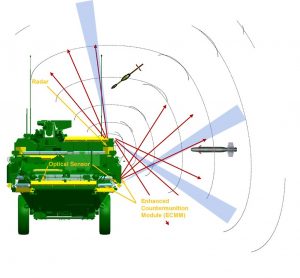
Sentinel is a distributed APS, which means that the sensors and counter-measures are located around the vehicle. “We have designed it to be deployed in two kits. The A-kit includes the brackets and cables needed to make the system work, which could be added to every vehicle in the fleet,” Brendley explained. “The user could then add the B-kits, which includes the sensors and countermunitions, to vehicles as they are deployed, for massive fleetwide cost savings,” he added. The disposition of the sensors and counter-measures around the sides and top of the vehicle mean that it can provide coverage of the upper-sphere and intercept drones of FPV attacks.
Sentinel combines radars, as is common with most APS solutions on the market, however they work in conjunction with specially designed electro-optical sensors. “Radars first cue the system to an incoming threat, which then powers up the rest of the system. A distributed processing network then analyses data from both the radar and electro-optical sensors to arrive at a fire-control solution in some millionths of a second,” Brendley said. The system activates so quickly that the radars can operate at very short ranges, meaning that lower power radars can be used than is standard for other APSs such as Trophy. It also enables the system to be radar agnostic to a certain extent, which can reduce cost and provide flexibility.
“The counter-measures that we use for Sentinel are far more effective than those we used for Iron Curtain, with the ability to defeat exceedingly hard threats. They are also steerable,” Brendley said. This means that if the counter-measure in one area is spent, the adjacent one will still be able to intercept despite being static.
The counter-measures are arranged in rows around the vehicle, which provides a multi-shot capability and makes it more challenging to overwhelm the vehicle with tactics such as simultaneously launching multiple projectiles from the same direction. The intercept is carried out very close to the vehicle, which means that the threat projectile may get destroyed when it is less than 2 milliseconds from the hull.
In contrast, a deployed APS, like the Elbit Iron Fist which consists of pedestal mounted effectors, fires its own projectile into the threat’s path, causing it to detonate further from the vehicle. While this may sound like a more optimal solution, it means that a deployed APS must detect a target – an RPG-7 for example – at a greater range to provide sufficient time for an intercept. In effect, this means that if an attacker can come close enough to the vehicle the APS will be unable to respond in time. This is not the case for distributed systems like Sentinel, or the Rheinmetall StrikeShield, which are always able to conduct an intercept regardless of the attack range.
“Sentinel is a software-defined system, meaning that it can be upgraded with new capabilities or updated to engage new threats via software updates,” Brendley said. “This greatly extends the usable life of the system, reducing total ownership costs, and since the system can learn from new data, it will be continually improved the longer it is used in the field,” he added.
Furthermore, Sentinel is designed to be built according to the platform requirements. This means its weight varies according to customer requirements and platform size. It can therefore be fitted to vehicles as light as Humvee, or as heavy as a tank, so long as they have sufficient armour to manage the residuals, Brendley said.
Active protection systems are fast becoming critical elements of an armoured vehicle’s survivability matrix. They are able to address very lethal and dangerous threats like large calibre anti-tank missiles at a much lower weight than is possible with passive or reactive armour. An APS can also protect light armoured vehicles like the Stryker or Boxer from these threats. The more recent spectre of loitering munitions and FPVs, laid bare by fighting in Ukraine adds to this mix. Sentinel is seemingly one of the first APSs to provide full upper-hemisphere coverage, but it is unlikely that it will be the last.
Images courtesy Artis

